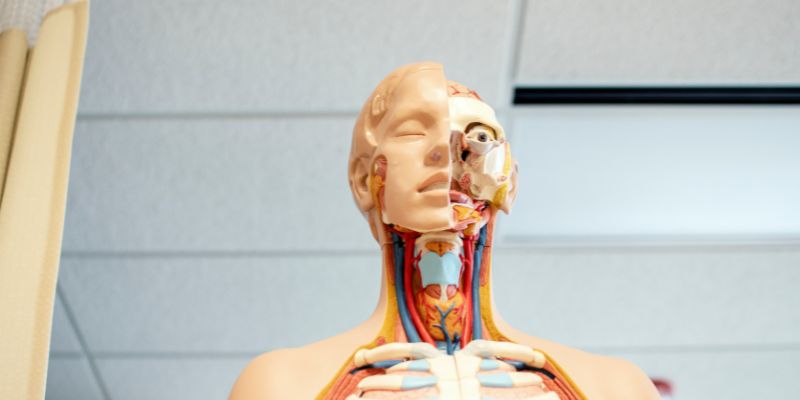Osteoporosis, a medical condition characterized by the presence of porous bone, is a global affliction impacting a significant number of individuals, often remaining asymptomatic. The condition is characterized by a progressive degradation of bone tissue, leading to a heightened susceptibility to fractures. The significance of osteoporosis lies in its potential impact on an individual's quality of life. This article tries to comprehensively address all aspects of a certain subject, including its definition, prevalence, causes, symptoms, diagnosis, prevention, and treatment procedures.
Osteoporosis: An Overview

Osteoporosis: What is it?
The progressive decline of bone density and quality is seen in individuals diagnosed with osteoporosis, leading to the manifestation of weakened and fragile skeletal structures. Osteoporosis is characterized by the development of weak bones that are prone to fractures. The presence of this illness may not manifest externally until a fracture transpires. The observed deviation from typical bone tissue composition poses a significant threat to the structural integrity of the skeletal system.
Incidence and Frequency
Osteoporosis, a condition mostly impacting postmenopausal women and the elderly, has a significant global prevalence, affecting millions of persons worldwide. Hip fractures, a frequently seen condition associated with osteoporosis, exhibit a high prevalence and may lead to severe health complications, including mortality. It is vital to comprehend the frequency and incidence of osteoporosis in order to effectively address public health concerns and develop appropriate healthcare strategies, particularly in light of the expanding aging population.
The Etiology of Osteoporosis

1. Age-Related Osteoporosis
The occurrence of bone loss due to the natural aging process is considered a typical and unavoidable aspect of aging, and is clinically known as primary osteoporosis. Following the attainment of peak bone density during early adulthood, there is a steady decline in bone density throughout time. Following the onset of menopause, there is a natural reduction in a woman's estrogen levels, which therefore increases her susceptibility to osteoporosis and other forms of age-related bone loss.
2. Fluctuations in Hormones
Osteoporosis often experiences exacerbation due to hormone fluctuations, particularly in postmenopausal women. During the menopausal transition, estrogen levels decline dramatically and as a result the bone health is severely affected. Consequently, it gives a boost to degradation process and negatively impacts overall bone health.
3. Insufficient Intake of Vitamins
Insufficient intake of vitamins and calcium has been identified as significant contributors to the development of osteoporosis. Vitamin D has a role in facilitating the absorption of calcium, an essential element for maintaining optimal bone health. The insufficiency of crucial nutrients might impede bone formation and maintenance, hence increasing the susceptibility to osteoporosis.
4. Lack of Physical Exercise
The correlation between a lack of weight-bearing exercises and overall sedentary behavior and the development of osteoporosis has been shown. Regular exercise has the potential to maintain bone density and strength by facilitating the process of bone remodeling. Insufficient physical activity may lead to a reduction in bone density and an increased susceptibility to osteoporosis.
5. Pharmaceutical Substances
Prolonged use of pharmaceutical substances such as corticosteroids has the potential to adversely impact skeletal well-being. The mechanism by which these medicines induce osteoporosis involves the disruption of bone remodeling, resulting in heightened bone resorption and decreased bone formation. It is essential for individuals who are prescribed these medications to engage in a dialogue with their healthcare providers on the potential hazards associated with bone health, and to explore strategies aimed at mitigating or preventing such risks.
Signs and Symptoms of Osteoporosis
1. The Hidden Dangers of Osteoporosis
A considerable number of individuals with osteoporosis remain oblivious to their condition until they have a bone fracture. The first manifestation of compromised bone health in an individual may present as a fragility fracture. Prompt identification and treatment are crucial due to the sneaky nature of the condition.
2. Types of Bone Breaks
Individuals diagnosed with osteoporosis are at a heightened risk of experiencing fractures in certain areas of the body, including the hip, spine, wrist, and shoulder. Hip fractures are a matter of significant concern due to the adverse impact they have on mobility and death rates. Vertebral fractures have the potential to result in a hunched posture and persistent discomfort, while fractures in the wrists and shoulders might impede the performance of even basic activities.
3. Pain and Mobility Impairment
Fractures associated with osteoporosis have the potential to induce persistent discomfort and hinder movement. In the event that a fracture transpires in either the hip or spine, the individual affected may experience a notable deterioration in their overall quality of life.
Health Examinations and Proactive Screening
The early detection of osteoporosis is of utmost importance in order to start therapy promptly. Healthcare practitioners have the potential to significantly reduce the occurrence of fractures and associated complications by identifying individuals who are at risk and prescribing suitable interventions and lifestyle modifications.
The most importance bone health examinations include:
- Bone density checks
- Fracture risk assessment tool (FRAX)
Control and Precautionary Measures
The prevention of osteoporosis is crucial in order to maintain bone strength and minimize the occurrence of fractures that cause discomfort. In order to achieve effective preventive and treatment outcomes, it is essential to use a multidisciplinary strategy that encompasses the following components:
Lifestyle Modifications
A healthy and well-balanced diet is the fundamental basis for promoting optimal bone health. Calcium is often present in dairy products, dark green vegetables, and fortified meals. Vitamin D, an essential nutrient, may be acquired from dietary sources, exposure to sunshine, or the use of supplements. It plays a vital role in facilitating adequate calcium absorption.
Weight-bearing activities, such as ambulation, running, and resistance training, elicit bone remodeling, leading to enhanced bone mineral density via consistent engagement in exercise and physical exertion.
Giving up smoking is a significant behavioral change that individuals do in order to discontinue the Smokers have a reduction in bone density, which subsequently increases their susceptibility to fractures.
Likewise, it is advisable to limit one's alcohol consumption to a level that can be well managed. The moderate use of alcohol, particularly among older individuals, has the potential to reduce the risk of osteoporosis.
Pharmaceutical Treatments Targeting Osteoporosis
In cases when there is a heightened risk of fracture or the condition has progressed, the administration of osteoporosis medicine may be used. Specialized pharmaceutical interventions, such as bisphosphonates, hormone therapy, denosumab, and other similar medications, have the potential to mitigate the risk of fractures by reducing bone resorption and promoting bone formation.
Strategies for Mitigating the Risk of Falls
The prevention of falls is of utmost importance in the management of osteoporosis. Evaluating the safety of one's residence, maintaining optimal visual acuity, and participating in balance-enhancing activities are all critical strategies that may be used to mitigate the risk of falls and subsequent fractures. Ensuring the preservation of bone health and overall quality of life necessitates the implementation of safety measures and safeguards, particularly among the older population.
Conclusion
Osteoporosis is a prevalent global health concern, characterized by the presence of porous and painless bones. A comprehensive examination has been conducted to thoroughly analyze the symptoms, diagnosis, and treatment options pertaining to this particular medical issue. The discreet progression of osteoporosis underscores the need for consistent surveillance and preventive interventions. To facilitate early intervention, it is important to ascertain risk factors such as age-related bone loss and hormone fluctuations. The preservation of bone health may be achieved by the adoption of a more health-conscious lifestyle, the appropriate use of medications, and the implementation of measures to avoid falls.




